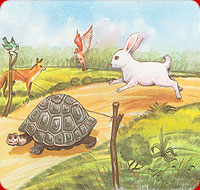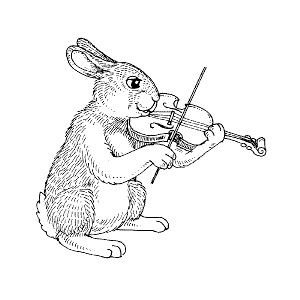It may seem intuitive to you that practicing or performing repertoire with fast passages, or at increased speeds, would lead to more injuries than slower pieces. To a certain extent, it’s true – if you play a section of a piece over and over again and a brisk tempo, without breaks, it is likely to be very fatiguing. Janet Horvath, author of Playing (less) Hurt, calculated that in the course of one aria in Handel’s Messiah, “Why Do the Nations”, her bow arm had to move back and forth 740 times. [1] In the last movement of Mahler’s 5th Symphony, Horvath estimates that she had to move her left hand fingers approximately 6,400 times. That is a lot of work for your muscles, especially if you are practicing or performing this type of repertoire regularly!
However, the slow movements of pieces also take a toll on our bodies, especially during performances. Sustaining good tone on a single, continuous note for multiple measures, all in one bow (I’m thinking of the slow movements of symphonies I’ve played in the past) can be very exhausting!
However, it’s not just a matter of tempo. The type of bow stroke can also be a major factor. Personally, I have found that spiccato and sostenuto can be equally as tiring if you have to maintain them for an extended amount of time. But it depends on the player, the weight of the bow you are using, and whether the arms muscles you are using for that bow stroke are up for the challenge. If you are used to playing spiccato all the time, it make not seem that tiring, because your muscles are used to it. But if someone who rarely has to play spiccato is suddenly asked to play a piece straight through with that bow stroke, they may feel as though their arm is about to fall off!
A lot of it is about conditioning. If you know that you’re going to be performing a piece that requires a lot of slow, sustained bow strokes, incorporate this into your practicing, so that you can build up your endurance for sustaining long notes. Likewise, if your orchestra is performing a movement that consists primarily of staccato, build up your endurance for staccato bow strokes by practicing staccato sections during your practicing sessions.
It’s also important to think about moderation. If you have recently recovered from an injury, or are currently dealing with one, you may find certain tempos and bow strokes more difficult than others. Pay attention to your body and what increases your symptoms. Start out by interspersing small amounts of the aggravating bow stroke within your regular practice session. As this bow stroke becomes easier, and no longer causes physical discomfort, gradually increase the proportion of your practice session devoted to this bow stroke until you have developed the stamina needed for your performance repertoire.
What do you think? In your experience, what tempos or bow strokes are the most fatiguing? What other factors are involved?
References
[1] Horvath, Janet. Playing (less) Hurt. Kearney, NE: Morris Publishing, 2002.
















Moderation is important in more ways than one. Yes, introducing the potentially challenging technique gradually is important, but so is varying the intensity with which you address it on different days. The way that athletes build rest days and/or different types of training into their routines is a good model.
There’s also the relationship between playing time and thinking time. If you’re putting in a lot of hours but not making much headway, that’s a sign that something about the way you are approaching the music is out of line and you could be driving yourself to an injury. Stepping back and doing more analytical work rather than repetition feels slower when you’re pushing yourself to absorb a lot of repertoire, but it is both more efficient and healthier in the long run.
Hello,
I was recently asked to give my permission to use a photo from my book Playing ( less) Hurt- An Injury Prevention Guide for Musicians Ovation was sited. I noticed several references to my work from you musician’s health expert Brianna Richardson in the following blog as well as other articles:
Practice vs. Performance: What’s harder on the body?
The following information is not correct:
Horvath, Janet. Playing (less) Hurt. Kearney, NE: Morris Publishing, 2002.
Please update the information as it seems Ms. Richardson frequently sites my work. My book was republished by Hal Leonard publications/ corp NY in a new 2010 edition. Since then HL’s books were acquired by Rowman & Littlefield Publishers
http://www.rowman.com
The 2010 edition is still in print and is available from Rowman & Littlefield as well as on Amazon.
Thank you for your attention to this, and for being proactive about musicians’ health.
Janet Horvath
https://ww88.enterprises